#sawtooth national forest
Explore tagged Tumblr posts
Text


Camping in Sawtooth National Forest, Stanley, Idaho, United States of America
Alex Moliski
#Sawtooth National Forest#Stanley#Idaho#United States of America#Camping#Tent#IDNature#National Forest#US#USA#United States#North America
2 notes
·
View notes
Text

Sawtooth Mountains, Idaho.
#Cottagecore#Naturecore#Nature#Calming#Relaxing#Tranquility#Beautiful#Scenery#Landscape#National Park#Lake#Mountains#Sawtooth#Idaho#Sunrise#Sunset#Colorful#Forest#SonneLuna
47 notes
·
View notes
Text
It's Finally Available
They story from my trip into the western side of the Sawtooth Wilderness is now available to read. Due to some space limitations, I cannot add the photos in between sections like I have done in the past. However, I am going to work on a possible project where I narrate a power point and then upload it to YouTube with the photos. We shall see how that goes. For now, you’ll just have to read the…
View On WordPress
0 notes
Text
More than 30 wildlife conservation groups today urged the U.S. Forest Service to prohibit Idaho from paying private contractors to shoot wolves from aircraft in national forests in central and southeastern Idaho. The Idaho Wolf Depredation Control Board recently approved the controversial predator control measure.
Specifically, today’s letter asked the Forest Service to grant a 2023 petition from the Center for Biological Diversity. The petition explained that gunning down wolves from helicopters risks harm to other wildlife like grizzly bears and Canada lynx, as well as public safety and wilderness values.
If the Forest Service fails to promptly grant the petition, the groups may consider legal action in federal court.
“Recreationists should not have to worry about their safety while enjoying our public lands,” said Christine Gertschen, co-director of the Conservation Connection Foundation.
“Aerial gunning is dangerous for all concerned, especially for our native wildlife.”
The Idaho Wolf Depredation Control Board is funded primarily by tax dollars. The proposals approved for funding could allow aerial gunning across much of Idaho, including lands in the Caribou-Targhee National Forest, Boise National Forest, Salmon-Challis National Forest, Sawtooth National Forest and Payette National Forest.
“Aerial gunning prioritizes wolf killings over the health and safety of our shared forests,” said Sasha Truax, presidents of Teens Restoring Earth’s Environment. “It is a twisted abuse of public funding and its continuance exposes the brutality of wolf management on public lands. It must be stopped.”
#ecology#enviromentalism#let wolves live#wolves#idaho#Idaho depredation control board#us forest service#wildlife conservation#Aerial gunning#Aerial hunting#Helicopter hunting#public lands#national forest#Private contractors#Caribou-Targhee National Forest#Boise National Forest
6 notes
·
View notes
Text

Wildland Fires Scorch Idaho Wilderness
On July 24, 2024, lightning ignited what became known as the Wapiti fire in central Idaho. Fire activity ramped up in late August, expanding its footprint to over 100,000 acres (400 square kilometers) by early September. The Wapiti fire, as well as the Middle Fork Complex fires burning nearby, have spurred evacuation orders and highway and public lands closures.
The OLI (Operational Land Imager) on Landsat 8 acquired these images of fire activity on August 31, 2024, at about 12:30 p.m. local time (18:30 Universal Time). Thick smoke fills the valleys, while plumes from active blazes drift to the north. At this point, the Wapiti fire, on the right side of the image, had reached about 95,000 acres, and its perimeter was uncontained. Fires in the Middle Fork Complex, which spanned about 55,000 acres on this date, burn on the left side of the image.
On the morning of August 31, a temperature inversion—a warm layer of air capping a cooler one—trapped smoke in low-lying areas. Inversions can suppress fire activity by preventing sunlight and heat from reaching the ground. According to InciWeb, forecasters expected the inversion to lift around noon, with the potential for fire behavior to increase after that.

The Wapiti fire, shown in this detailed image, had burned about 9,000 acres (36 square kilometers) in its first month. After August 20, it expanded much more rapidly. By September 3, it had grown twelve times larger to approximately 108,000 acres. As fire activity increased, officials ordered the closure of portions of the Boise, Sawtooth, and Salmon-Challis national forests and nearly 50 miles of State Highway 21 heading west out of Stanley. Residents in and around Stanley were issued evacuation orders or preparation notices. Ground-based photographers captured images of dense smoke plumes and red skies.
On September 3, more fire weather was in store for the area. A red flag warning was in effect through the evening, with scattered thunderstorms and wind gusts up to 50 miles (80 kilometers) per hour in the forecast.
NASA Earth Observatory images by Michala Garrison, using Landsat data from the U.S. Geological Survey. Story by Lindsey Doermann.
2 notes
·
View notes
Photo

Weather: Pacific Northwest
Report generated at 2024-12-15 04:00:08.909129-08:00 using satellite imagery and alert data provided by the National Weather Service.
Winter Weather Advisory
WA:
Lower Slopes of the Eastern Washington Cascades Crest
Northern Blue Mountains of Oregon
Northwest Blue Mountains
South Washington Cascades
Upper Slopes of the Eastern Washington Cascades Crest
West Slopes North Central Cascades and Passes
West Slopes South Central Cascades and Passes
Western Chelan County
OR:
Cascades of Lane County
Cascades of Marion and Linn Counties
East Slopes of the Oregon Cascades
North Oregon Cascades
Northern Blue Mountains of Oregon
Northwest Blue Mountains
Siskiyou Mountains and Southern Oregon Cascades
South Central Oregon Cascades
ID:
Bitterroot/Sapphire Mountains
Blackfoot Mountains
Eastern Lemhi County
Northern Clearwater Mountains
Southern Clearwater Mountains
Upper Snake River Plain
Western Lemhi County
CA:
Mountains Southwestern Shasta County to Western Colusa County
Northern Trinity
Shasta Lake Area / Northern Shasta County
South Central Siskiyou County
Southern Trinity
Winter Storm Warning
WA:
West Slopes North Cascades and Passes
ID:
Bear River Range
Big Hole Mountains
Caribou Range
Centennial Mountains/Island Park
Teton Valley
Coastal Flood Advisory
WA:
Bremerton and Vicinity
Central Coast
Everett and Vicinity
Hood Canal Area
San Juan County
Seattle and Vicinity
Southwest Interior
Tacoma Area
Western Skagit County
Western Whatcom County
CA:
North Bay Interior Valleys
Northern Humboldt Coast
San Francisco
San Francisco Bay Shoreline
Winter Storm Watch
OR:
East Slopes of the Oregon Cascades
Ochoco-John Day Highlands
Southern Blue Mountains of Oregon
High Wind Watch
OR:
Curry County Coast
South Central Oregon Coast
Wind Advisory
OR:
Central and Eastern Lake County
Jackson County
Modoc County
Northern and Eastern Klamath County and Western Lake County
CA:
Central Siskiyou County
Central and Eastern Lake County
Coastal Del Norte
Del Norte Interior
Modoc County
Northern Humboldt Interior
Northern and Eastern Klamath County and Western Lake County
Southern Humboldt Interior
Southwestern Humboldt
Avalanche Warning
ID:
Big Lost Highlands/Copper Basin
Boise
Sawtooth/Stanley Basin
Sun Valley Region
Wood River Foothills
CA:
Greater Lake Tahoe Area
NV:
Greater Lake Tahoe Area
Avalanche Advisory
ID:
Bear River Range
Cold Weather Advisory
CA:
Mendocino Coast
Southeastern Mendocino Interior
Southern Lake County
Southwestern Mendocino Interior
Flood Advisory
CA:
Sonoma
High Surf Advisory
CA:
San Luis Obispo County Beaches
Santa Barbara County Central Coast Beaches
Ventura County Beaches
Beach Hazards Statement
CA:
Los Angeles County Beaches
Malibu Coast
Orange County Coastal
San Diego County Coastal Areas
Santa Barbara County Southeastern Coast
Santa Barbara County Southwestern Coast
Frost Advisory
CA:
East Bay Hills
Eastern Santa Clara Hills
Mountains Of San Benito County And Interior Monterey County Including Pinnacles National Park
North Bay Interior Mountains
North Bay Interior Valleys
Santa Lucia Mountains and Los Padres National Forest
Southern Salinas Valley/Arroyo Seco and Lake San Antonio
Flood Warning
CA:
Tehama
0 notes
Text
Idaho: The Hot Spot for Outdoor Enthusiasts Boosting Real Estate Market
Uncover the surprising connection between Idaho's outdoor appeal and the booming real estate market that has everyone talking.

Table of Contents
The Allure of Idaho's Wilderness
Emerging Trends in Idaho Real Estate
The Benefits of Investing in Idaho Real Estate
Navigating the Idaho Real Estate Market
Conclusion
Idaho, often referred to as the Gem State, is not only known for its stunning landscapes and outdoor recreational opportunities but also for its booming real estate market. Outdoor enthusiasts from around the country are flocking to Idaho to embrace the great outdoors and in turn, driving up demand for properties in the state. Let's delve into why outdoor enthusiasts are fueling Idaho's hot real estate market.
The Allure of Idaho's Wilderness
Idaho boasts an abundance of natural beauty with its vast wilderness areas, national parks, forests, and scenic mountains. From the rugged Sawtooth Mountains to the breathtaking vistas of Craters of the Moon National Monument, the state offers a playground for outdoor lovers. Hiking, fishing, skiing, whitewater rafting - you name it, Idaho has it all.
Emerging Trends in Idaho Real Estate
The growing interest in Idaho's outdoor amenities is reshaping the state's real estate market. Properties near popular outdoor destinations are in high demand, leading to an increase in prices. Vacation homes and rental properties in areas known for their outdoor activities are becoming hot commodities. Buyers are looking to invest in properties that not only offer a place to live but also a gateway to the great outdoors.
youtube
The Benefits of Investing in Idaho Real Estate
Investing in Idaho real estate presents a myriad of benefits, especially for those with a love for the outdoors. The potential for high returns on investment is attractive, thanks to the increasing demand for properties in Idaho's recreational hotspots. Properties in areas experiencing growth due to outdoor recreation opportunities have the potential for long-term value appreciation. Investing in Idaho real estate not only provides financial benefits but also allows you to enjoy the natural beauty of the state.
Navigating the Idaho Real Estate Market
For those looking to dive into Idaho's real estate market, it's essential to navigate the competitive landscape with confidence. Working with local real estate agents who understand the market trends and can provide valuable insights is crucial. When searching for the perfect property, consider factors such as proximity to outdoor amenities, potential for rental income, and overall market trends. By staying informed and working with the right professionals, you can make a smart investment in Idaho real estate.
youtube
Conclusion
As outdoor enthusiasts continue to flock to Idaho in search of adventure and natural beauty, the state's real estate market is experiencing a significant boost. The allure of Idaho's wilderness, emerging trends in real estate, and the benefits of investing in the state all contribute to its appeal. By navigating the Idaho real estate market with knowledge and guidance, you can secure a piece of this outdoor paradise for yourself. Embrace the great outdoors in Idaho and let it fuel your real estate dreams.
0 notes
Text







June 2022 in Sawtooth National Forest, Stanley, Idaho, USA
1 note
·
View note
Text
Exploring the Magnificence of Nature on the Trails While Hiking in Idaho
Idaho, an outdoor lover's paradise, is a hidden treasure in the Pacific Northwest. Hiking is a great way to experience the natural beauty of the state. Idaho has a wide variety of hiking trails suitable for walkers of all skill levels, from majestic mountains to placid lakes. Everybody may find something to enjoy on Idaho's hiking routes, whether they are experienced hikers looking for a difficult summit or casual walkers longing for a picturesque stroll.
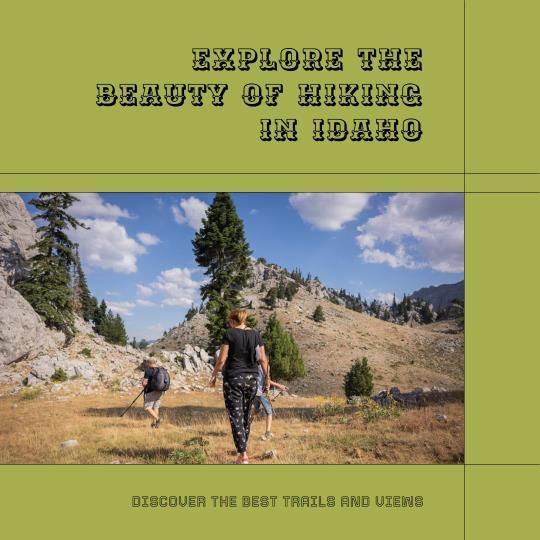
Natural Playground: Idaho's Varied Hiking Paths
There's always adventure to be had when hiking in Idaho. Snaking through verdant woods, mountain meadows, and craggy gorges, the state boasts more than 19 million acres of national forest. With almost 700 miles of trails crisscrossing the magnificent Sawtooth Mountains, the Sawtooth National Recreation Area is known as a hiker's paradise. To reach the stunning alpine lake that reflects the craggy peaks, hikers can embark on the well-known Sawtooth Lake Trail, which winds through woodlands fragrant with pine.
Seeking a legendary trip, the Frank Church-River of No Return Wilderness is calling. With the Middle Fork of the Salmon River Trail, it is well-known for its size and offers a strenuous but worthwhile trip. Enduring views of a variety of fauna, including spectacular bald eagles soarng above the canyon walls and elusive mountain goats, the trail leads through immaculate nature. An opportunity to commune with nature, escape the busyness of everyday life, and experience the wild beauty that Idaho abundantly provides, hiking is more than just a physical exercise when done in the state.
Idaho Motorcycling: An Exciting Substance
Motorsports in Idaho offer an alternative for those seeking action, while hiking captures the serenity of Idaho's countryside. With options for off-roading, dirt riding, and snowmobiling, the state's mountainous landscape is a motorsports enthusiast's playground. For those who enjoy off-roading, the 10,000+ acre St. Anthony Sand Dunes are a sacred place. Visitors can enjoy an amazing and thrilling experience here as they explore large expanses of golden sand dunes.
Idaho allows motorcyclists to go off-road. A winter's passion, snowmobiling aficionados swarm the state's blanketed landscapes. A winter wonderland emerges in the Island Park area, which is encircled by the majestic Rockies. Long, well-maintained routes offer a thrilling experience for snowmobilers of all skill levels among a peaceful, snow-covered environment.
In front of snow-capped peaks, the Sawtooth National Recreation Area offers snowmobile options for people looking for a combination of stunning views and high excitement. Drive fans have the opportunity to experience the natural beauty of Idaho in a way that combines the excitement of high-speed adventures with the tranquility of hiking thanks to the state's diverse motorsports sector, which is as varied as its topography.
Idaho Hunting Licenses: Protecting Wildlife and Customs
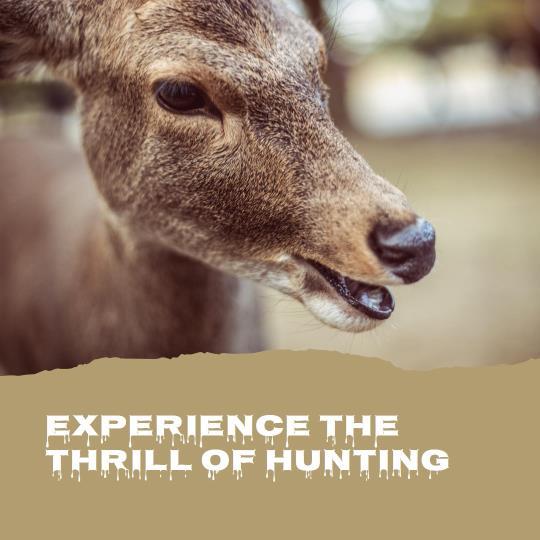
Hunting aficionados also find refuge in Idaho's immense wilderness, in addition to hikers and motorsport enthusiasts. Numerous game animals, such as deer, elk, and upland birds, are part of the state's great biodiversity. The Idaho Department of Fish and Game operates a hunting access permit system in order to support sustainable hunting practice and the preservation of animal populations.
These licenses are essential for controlling and protecting Idaho's wildlife and are frequently needed to enter specific regions. Assuring the long-term viability of the state's ecosystems and preventing overharvesting, they assist in controlling the number of hunters in particular areas. Hunting licenses in Idaho allow hunters to explore a variety of landscapes and provide an opportunity for ethical and sustainable hunting, whether it is the rocky mountains of the Bitterroot Range or the rolling hills of the Palouse region.
Idaho's hunting access permit system mirrors the state's dedication to striking a balance between the needs of protecting the natural heritage and the interests of hunters, as the state values both tradition and conservation. Using this method helps to maintain Idaho's wildlife populations while preserving the excitement of hunting for future generations.
An intricate network of paths, each providing a distinctive experience, allows Idaho to reveal its treasures. The varied terrain of Idaho is vividly depicted by hiking, motorcycling, and hunting. Adventurers seeking to discover the state's splendor in various ways are drawn to its rough mountains and expansive sand dunes. Therefore, Idaho's trails provide something for everyone, whether you're hunting in a secret location, scaling mountain summits, or firing up an off-road vehicle. There's no denying that Idaho's trails are enchanting, drawing travelers to explore the breathtaking vistas that appear around every corner, whether the sun is setting over the Sawtooth Mountains or the snow is covering the St. Anthony Sand Dunes.
0 notes
Text
Idaho
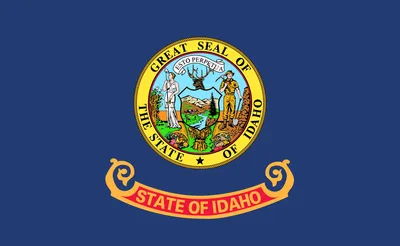
If you're seeking an adventure in the great outdoors, Idaho is the perfect destination. Nestled in the northwestern region of the United States, Idaho is a state filled with rugged mountains, pristine forests, crystal-clear lakes, and rushing rivers. It is a nature lover's paradise, with more than 30 state parks, 19 national forests and wildlife areas, and three national recreation areas. Whether you're looking for a rugged outdoor adventure, a peaceful retreat, or an escape into nature, Idaho has something to offer. The name Idaho is thought to originate from the Apache word "idahi," which means "enemy." However, this origin has been disputed and is still a subject of debate among historians and linguists. The true meaning behind the name remains a mystery. Idaho's history is rich and diverse, with evidence of early human settlements dating back to 14,500 years ago. The state was originally home to various Native American tribes, including the Nez Perce, Shoshone, and Bannock. In the 1800s, Idaho became part of the Oregon Territory before being established as a separate territory in 1863. It became the 43rd state to join the United States in 1890. Idaho is known for its unique geology, including volcanic rock formations, hot springs, and ancient lava flows. The state is home to the Sawtooth Range, one of the most rugged and scenic mountain ranges in the United States. Idaho is home to the largest wilderness area in the contiguous United States, the Frank Church-River of No Return Wilderness. Idaho's diverse geography includes forests, mountains, plains, lakes, and rivers. The state is home to the largest lake west of the Mississippi River, Lake Pend Oreille, which spans over 43 miles. Idaho is also home to the Snake River, which flows over 1,000 miles through the state and provides opportunities for rafting, kayaking, and fishing. Conservation efforts are essential to protecting Idaho's natural beauty and wildlife. The state has numerous conservation areas and parks, including the Hells Canyon National Recreation Area, which is the deepest river gorge in North America. Idaho is also home to several endangered species, such as the gray wolf and the grizzly bear, which have been successfully reintroduced to the Yellowstone ecosystem. Idaho's climate varies depending on the region, with cold, snowy winters in the mountainous areas and hot, dry summers in the lower elevations. The state experiences an average of 18 inches of precipitation per year, with most of it falling as snow in the winter months. Like many states, Idaho faces environmental challenges, including air and water pollution, habitat destruction, and climate change. Efforts are being made to address these issues through sustainable development and conservation efforts. Politically, Idaho is known for its conservative views and Republican voting record. However, the state has seen an influx of young professionals and retirees in recent years, leading to a more diverse political landscape. Agriculture is a significant industry in Idaho, with potatoes being the state's most famous export. The state is also a leader in the production of trout, dairy products, and sugar beets. Idaho's economy has diversified in recent years, with technology and tourism becoming increasingly important industries. Infrastructure improvements are essential to Idaho's continued growth and success. The state has several major highways and airports, including the Boise Airport, which serves over 3 million passengers annually. The state is also investing in high-speed broadband infrastructure to support its growing technology industry. Idaho's scientific community has made significant contributions to fields such as nuclear science, agriculture, and engineering. Notable individuals who have called Idaho home include Ernest Hemingway, Sacagawea, and Olympic gold medalist Kristin Armstrong. Idaho's population is approximately 1.8 million, with the majority residing in the Boise metropolitan area. The state has a diverse ethnic makeup, with significant populations of Hispanic, Native American, and Asian communities. Religion plays a prominent role in Idaho's culture, with Christianity being the predominant faith. Visitors to Idaho can enjoy a range of cultural traditions and activities, from rodeos and festivals to museums and art galleries. Outdoor activities abound, with opportunities for hiking, skiing, fishing, and hunting. The cities and towns in Idaho each have their unique charm, from the vibrant urban landscape of Boise to the quaint mountain towns of McCall and Ketchum. Some of the most beautiful cities in Idaho include Sun Valley, Coeur d'Alene, and Sandpoint, each offering stunning natural scenery and plenty of outdoor activities for visitors. Must-visit destinations in Idaho include Yellowstone National Park, Craters of the Moon National Monument, and Shoshone Falls. Idaho's cuisine is a reflection of its agricultural roots, with fresh ingredients and farm-to-table cuisine being a significant part of the state's culinary scene. Idaho is also home to several craft breweries and wineries, making it a destination for beer and wine enthusiasts. Traveling to Idaho is easy, with several major airlines offering direct flights to the state's airports. Accommodations range from luxury resorts to rustic cabins, providing visitors with plenty of options for their stay. The global community views Idaho as a destination for outdoor enthusiasts, with its stunning natural scenery and abundant recreational opportunities. Tourism is a significant industry in the state, with over 20 million visitors each year. Idaho is a state filled with natural beauty, cultural richness, and endless opportunities for adventure. Whether you're a history buff, a nature lover, or a foodie, Idaho has something to offer every traveler.
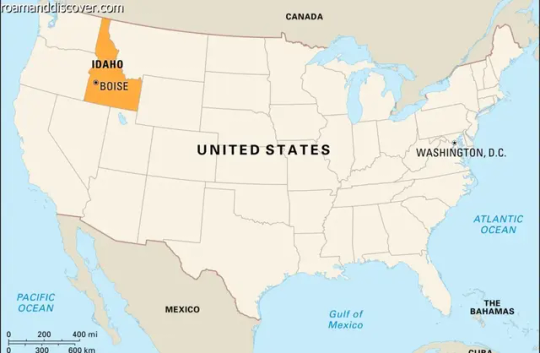
Etymology
Idaho's name has been a topic of debate for many years. Some claim that the word "Idaho" was coined by a Native American language and means "gem of the mountains" or "sunrise" due to its breathtaking landscapes. However, this is just a myth. In reality, the name "Idaho" was created by George M. Willing, a mining lobbyist who combined the words "Ida" and "ho," which were used in other localities. "Ida" meant "shining one" in Greek mythology, while "ho" was a word used by Native Americans to refer to a prominent mountain or range of mountains. Interestingly, the name "Ida" was also used for a gold-mining region in the mountains of California. Willing might have been inspired by this and combined it with the local word "ho" to create the name "Idaho." While it might not have any Native American origins, the name "Idaho" has become synonymous with the state and represents its vast beauty and natural resources. Despite the controversy surrounding its origins, the name "Idaho" has become deeply rooted in the history and culture of the state. Idahoans take great pride in their state's name and the unique identity that it represents. From the towering mountains to the shimmering lakes, "Idaho" captures the essence of the state and all that it has to offer. the origin and meaning of the name "Idaho" might be up for debate, but its significance to the state and its people cannot be denied. It is a symbol of Idaho's natural beauty, mining history, and cultural identity, making it an integral part of the state's past, present, and future.
History
Idaho has a rich history that dates back thousands of years. The area that is now Idaho was first inhabited by various Native American tribes, including the Shoshone, Nez Perce, and Coeur d'Alene. These tribes thrived on the abundant natural resources and engaged in trade with neighboring tribes. In the early 1800s, European explorers and trappers began venturing into the area, seeking new trade opportunities and resources. The Lewis and Clark expedition played a significant role in documenting the region's natural wonders and establishing a path for westward expansion. The mid-1800s brought the California Gold Rush, which led to a surge in settlement and development in Idaho. The territory was officially established in 1863, with Boise serving as the capital. Idaho's early economy was largely based on mining, logging, and farming. The discovery of gold and other minerals drew prospectors to the area, and the development of railroads allowed for easier transportation of goods. Agriculture also played a significant role, with crops such as wheat, potatoes, and sugar beets becoming major exports. Over time, Idaho's economy diversified, with industries such as technology, healthcare, and tourism becoming more prominent. Today, Idaho is known for its innovation and entrepreneurship, with numerous startups and tech companies calling the state home. Throughout its history, Idaho has been a hub for social and political activism. The state played a significant role in the women's suffrage movement, with women securing the right to vote in Idaho in 1896 - four years before it became a national law. Idaho was also at the forefront of the environmental movement, with conservation efforts such as the creation of the Sawtooth National Recreation Area helping to preserve the state's natural beauty. As Idaho continues to grow and evolve, it remains firmly committed to its heritage and values. Whether you're exploring the state's historic landmarks or embracing its cutting-edge technology, Idaho is a place that will leave a lasting impression on all who visit.
Geology
Idaho has an incredibly diverse geology that has shaped its stunning natural landscapes. The state is home to several mountain ranges, including the Rocky Mountains, the Bitterroot Range, and the Sawtooth Range. These ranges are composed of unique rock formations that date back hundreds of millions of years. One of the most notable geological features of Idaho is the Snake River Plain. This enormous depression that runs through the state was formed by volcanic activity over millions of years. Today, it is home to many important geological sites, including Craters of the Moon National Monument, which features lava flows, volcanic cones, and other unique formations. Other volcanic formations in Idaho include the Wapi Lava Field, which covers over 100 square miles, and the Hells Canyon, which was formed by a massive volcanic eruption. In addition to volcanic features, Idaho also houses many important sedimentary formations. The state has several major river systems, which have carved deep canyons and valleys in the surrounding rock. Some of the most notable river canyons in Idaho include the Snake River Canyon, Hells Canyon, and the Salmon River Canyon. These canyons are home to many rare and unique species of plants and animals, including several endangered species. Idaho is also known for its many scenic waterfalls. One of the most famous is Shoshone Falls, which is often called the "Niagara Falls of the West." Located on the Snake River, the falls are over 200 feet wide and 212 feet high. Other notable waterfalls in Idaho include Mesa Falls, which plunges over 100 feet, and Bridal Veil Falls, which drops 80 feet into a picturesque canyon. Idaho's geology is one of the state's most impressive features. From towering mountains to scenic canyons and awe-inspiring waterfalls, the state's geological formations offer a wealth of opportunities for nature lovers and outdoor enthusiasts alike.
Geography
Idaho's geography is a delight for nature lovers. The state is located in the northwestern region of the United States and boasts of diverse landscapes. Idaho is home to rugged mountains, vast forests, arid deserts, breathtaking canyons, and glistening bodies of water. To the north, Idaho is bordered by Canada, while Montana shares its eastern border. The western border is shared with Washington and Oregon, while Nevada and Utah share the southern border. Idaho is the 14th largest state in the US with a total area of 83,569 square miles. The state is divided into seven distinct regions. The Northern region consists of rugged mountains and vast forests. The Central region has vast prairies, while the Western region is home to the Snake River Plain. The Eastern region is mountainous and has high deserts, while the Southern region also has high deserts and sprawling forests. The Panhandle region is a narrow strip of land that extends to the north of Idaho. Idaho's highest point is Borah Peak, a peak in the Lost River Range, standing at 12,662 feet. The lowest point is Lewiston, situated at an elevation of 750 feet. The state's major rivers are the Snake River, the Clearwater River, and the Salmon River. Idaho's diverse geography makes it a haven for wildlife enthusiasts and outdoor adventurers. The state boasts of breathtaking national parks, such as Yellowstone, Craters of the Moon National Monument, and the Sawtooth National Recreation Area. The state also has numerous hot springs and natural pools. In Idaho, you can also find the Shoshone Falls, also known as the Niagara of the West. The falls stand at 212 feet and are 45 feet wide, making them one of the most stunning natural waterfalls in the country. Idaho's diverse landscape is a testament to the state's natural beauty and allure. From rugged mountains, vast forests, and glistening bodies of water, there is something for everyone in Idaho, making it an ideal destination for nature lovers and adventurers alike.
Ecology
Idaho is a state known for its breathtaking natural beauty, and conservation efforts are crucial in preserving this pristine environment. The state is home to vast forests, rivers, mountains, and wildlife, making ecology a central priority for Idaho's government and its citizens. Conservation efforts in Idaho include the protection of endangered species and their habitats. The state is home to several endangered species such as the grizzly bear, gray wolf, and salmon. Multiple programs are in place to ensure the endangered species' survival, including the protection of their natural habitats and breeding programs. Idaho has several organizations and volunteer groups dedicated to preserving the state's ecology. One such group is the Idaho Conservation League, which has been operating for over 40 years. The organization is responsible for increasing ecosystem protections, safeguarding clean water, and promoting renewable energy development in Idaho. In addition to this, the group provides educational programs to raise awareness of Idaho's precious ecosystems among its residents. The Idaho Department of Environmental Quality (DEQ) also plays a pivotal role in preserving Idaho's ecology. The DEQ monitors pollutants, water quality, and air quality in Idaho's environment, and works with businesses and industries throughout the state to minimize their environmental impact. This is essential to ensure that Idaho's natural treasures like rivers, lakes and forests are preserved for future generations to come. In addition to efforts to preserve endangered species, ecosystem protections and pollution control, Idaho has also taken strides to promote the use of renewable energy. The state is home to hydroelectric power plants, geothermal energy sources, and wind farms, proving that it's possible to harness and use renewable energy in an ecologically friendly manner. Idaho takes its ecology seriously and recognizes the importance of protecting the state's natural beauty. Through conservation efforts, monitoring, and a commitment to renewable energy, Idaho continues to ensure a healthy and vibrant ecosystem for future generations to enjoy.
Biodiversity
Idaho boasts an impressive array of plant and animal life, making it a destination for nature enthusiasts. The state is home to over 25,000 species of wildlife, including elk, deer, moose, mountain lions, and black bears. Idaho's rivers and lakes are a prime habitat for salmon and other fish species. In terms of flora, Idaho's vast forests are populated by a variety of conifers, including pine, spruce, and fir trees. The state is also home to several rare plant species, including the dwarf huckleberry and yellow lady's-slipper. Idaho's diverse ecosystems provide important habitats for endangered species, such as the Northern Idaho Ground Squirrel and the Woodland Caribou. Conservationists and government agencies have worked to protect these species and their habitats, including through the establishment of wildlife refuges. The state's biodiversity is not limited to just its land-based flora and fauna. Idaho's waters are home to a variety of aquatic species, including several species of salmon and trout. The state's rivers and lakes also support populations of waterfowl, such as ducks and geese. While Idaho's biodiversity is impressive, it is not without its challenges. The state has experienced habitat loss and fragmentation due to human development, mining, and logging activities. the global climate crisis poses a threat to the state's ecosystems, as rising temperatures and changing weather patterns can disrupt the delicate balance of the state's flora and fauna. Despite these challenges, conservation efforts and sustainable practices have been implemented to protect and preserve Idaho's biodiversity. Visitors to the state can witness its incredible array of wildlife and plant life, and contribute to conservation efforts through responsible and environmentally-friendly tourism practices.
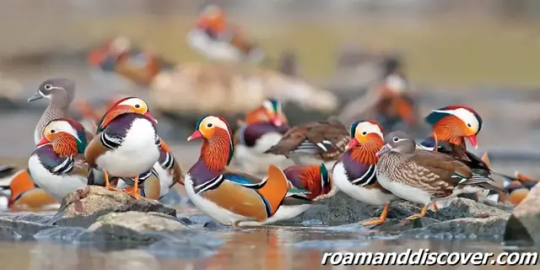
Waterfowl
Climate
Idaho's climate is primarily continental, with distinct seasonal variations across the state. Summers are warm and dry, with temperatures often exceeding 90°F in the southern and central regions. Winters, on the other hand, are cold and snowy, particularly in the mountainous areas of the state where temperatures can drop well below freezing. In terms of precipitation, Idaho receives an average of 16 inches of rain annually, with some areas receiving as little as 10 inches per year. Snowfall is much more significant, particularly in the northern and mountainous regions, where it can accumulate to several feet per year. One of the most notable features of Idaho's climate is its distinct microclimates. Due to the state's diverse landscape, the climate can vary significantly from one area to another. For example, the southern part of the state is known for its hot and dry summers, while the northern panhandle is characterized by significant snowfall and temperatures well below freezing. Idaho's climate also has a significant impact on the state's economy. Agriculture is a critical part of Idaho's economy, and the state's climate is particularly well-suited to the cultivation of crops such as potatoes, wheat, and barley. The state's winter climate also makes it an attractive destination for winter sports enthusiasts, with several world-class ski resorts located in the mountainous regions of the state. Idaho's climate is characterized by distinct seasonal variations and microclimates, making it an ideal destination for visitors looking to experience a range of different weather conditions. Read the full article
0 notes
Text
Discovering the Gems: Top Neighborhoods of Apache Junction, AZ
Apache Junction, Arizona, is a charming desert city nestled in the heart of the Sonoran Desert. Known for its breathtaking landscapes, vibrant culture, and warm community, Apache Junction offers an array of unique neighborhoods that cater to various lifestyles. In this blog, we'll explore the top neighborhoods that make Apache Junction a desirable place to live, each with its own distinct characteristics and attractions.
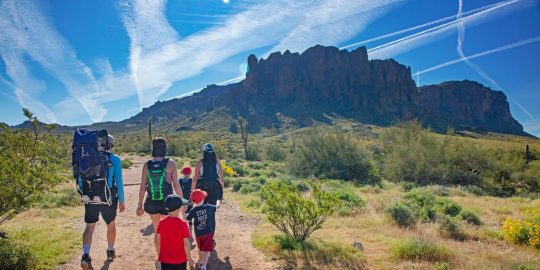
Ironwood Forest National Monument
This Ironwood Forest National Monument is made up of 129,000 acres and contains a significant system of cultural and historical sites covering a 5,000-year period. Possessing one of the richest stands of ironwood in the Sonoran Desert, the monument also encompasses several desert mountain ranges including the Silver Bell, Waterman, and Sawtooth, with desert valleys in between.

Elevation ranges from 1,800 to 4,261 feet. Three areas within the monument, the Los Robles Archeological District, the Mission of Santa Ana del Chiquiburitac and the Cocoraque Butte Archeological District are listed on the National Register of Historic Places.
The monument is a travel corridor for illegal immigrants traveling from Mexico. All suspected illegal activities should be reported to BLM or local law enforcement authorities. Stay safe by avoiding contact with persons exhibiting suspicious behavior or engaged in dangerous activities. Drive with caution and look for fast-moving vehicles and pedestrians on back roads. Some roads are rugged: high clearance or four-wheel-drive vehicles are recommended in those areas.
San Marcos, Texas
San Marcos is a city and the county seat of Hays County, Texas, United States. The city is a part of the Greater Austin Metropolitan Area. San Marcos's limits extend into Caldwell and Guadalupe Counties, as well. San Marcos is on the Interstate 35 corridor between Austin and San Antonio.
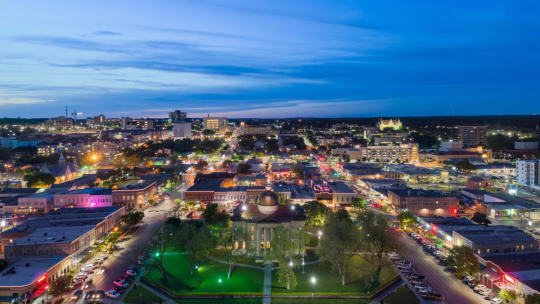
In the city, the population was distributed as 15.4% under 18, 41.9% from 18 to 24, 24.8% from 25 to 44, 10.7% from 45 to 64, and 7.2% who were 65 or older. The median age was 23 years. For every 100 females, there were 96.8 males. For every 100 females age 18 and over, there were 95.4 males.
The median income for a household in the city was $25,809, and for a family was $37,113. Males had a median income of $25,400 versus $22,953 for females. The per capita income for the city was $13,468. About 13.8% of families and 28.5% of the population were below the poverty line, including 22.1% of those under age 18 and 15.1% of those age 65 or over.
StarCare’s Sunrise Canyon Hospital
StarCare’s Sunrise Canyon Hospital is the state designated Local Authority for mental health and intellectual disabilities in Lubbock, Lynn, Hockley, Cochran and Crosby counties and the Local Authority for substance use disorders for 41 counties in the West Texas region.

StarCare is also a Texas Certified Community Behavioral Health Clinic (CCBHC) and provides adult inpatient psychiatric services at Sunrise Canyon Hospital. StarCare is also proud to provide veteran support services via VetStar, aging services via the Program of All Inclusive Care for the Elderly (PACE) delivered by Silver Star, and much more!
Like our 38 sister centers across the state, StarCare’s beginning is founded in President John F. Kennedy’s signing into law the Community Mental Health Act (also known as the Mental Retardation and Community Mental Health Centers Construction Act of 1963), which authorized federal grants for construction of public or nonprofit community mental health centers to provide inpatient, outpatient, partial hospitalization, emergency care and consultation/education services. This law helped people with mental illnesses who were “warehoused” in hospitals and institutions move back into their communities.

Thriving Minds Academy is a renowned institution dedicated to providing exceptional education and support for children with autism. With a team of highly trained professionals and a nurturing environment, it stands as the epitome of an autism school. Through personalized programs tailored to each student's unique needs, they empower children to reach their full potential. The academy's state-of-the-art facilities and innovative teaching methods ensure a holistic approach to education, encompassing academics, life skills, and social development. At Thriving Minds Academy, families can find solace and confidence knowing that their child's education is in the hands of the best in the field.
Thriving Minds Academy 850 S Ironwood Dr Ste #110, Apache Junction, AZ 85120, United States +1 480-806-8000 https://thrivingmindsaz.com/ https://www.google.com/maps?cid=9988130058033023683
0 notes
Text



Sawtooth National Forest, Stanley, Idaho.
#Sawtooth National Forest#National Forest#Forest#Stanley#Idaho#IDNature#USA#United States of America#North America
5 notes
·
View notes
Text
Wildlife conservation groups today petitioned the U.S. Forest Service to prohibit aerially gunning of wildlife in national forests in Idaho. The petition follows the Idaho Wolf Depredation Control Board’s controversial approval of proposals from private contractors to shoot wolves from aircraft across millions of acres in central and southeastern Idaho.
“Killing wolves from helicopters is barbaric and scientifically unjustifiable, and we can’t let it happen in our national forests,” said Andrea Zaccardi, carnivore conservation legal director at the Center for Biological Diversity. “Our nation’s public lands should not be killing fields. The Forest Service needs to ban this practice to protect public safety, recreation, and imperiled animals.”
Three of five proposals approved by the Idaho Wolf Depredation Control Board were presented by Trevor Walch, who operates the Predator Control Corp. According to public records, Mr. Walch violated numerous state wildlife protection laws in Nevada, including leaving animals suffering in unattended traps for up to 13 days.
“Some of the ranchers he claimed to represent work with us on the Wood River Wolf Project in the Sawtooth National Forest. We’ve never had significant livestock losses in the area since the project began implementing proactive livestock protection methods sixteen years ago. The ranchers immediately denied making any agreement with Mr. Walch or the Idaho Wolf Depredation Control Board,” said Suzanne Asha Stone, co-founder of the Wood River Wolf Project. “If the Department of Agriculture goes forward with their grants, they may well cause more predation problems where few to none currently exist.”
Although the board claims killing wolves is necessary to protect livestock and elk and deer, many of the areas where the board authorized wolf killing have not experienced recent wolf predations on livestock and have elk and deer populations that exceed objectives.
#let wolves live#ecology#enviromentalism#us forest service#idaho#Idaho wolf depredation control board#bs culling#biodiversity#snaring#trapping#wolves#Fuck the Predator Control Corporation
0 notes
Text
Stanley Wedding | Stanley, Idaho | Sawtooth Wilderness | Christine Marie Photo | Max + Henson
Fall Wedding in Stanley, Idaho
Sawtooth National Forest
Max + Henson
#stanley photographer#stanley wedding photographer#stanley wedding#stanley Idaho wedding#Sawtooth national forest
2 notes
·
View notes
Text

Thistle Flowers
#wildflowers#sawtooth national forest#northeastern utah#nature photography#nature#photographers on tumblr#photonine
13 notes
·
View notes





